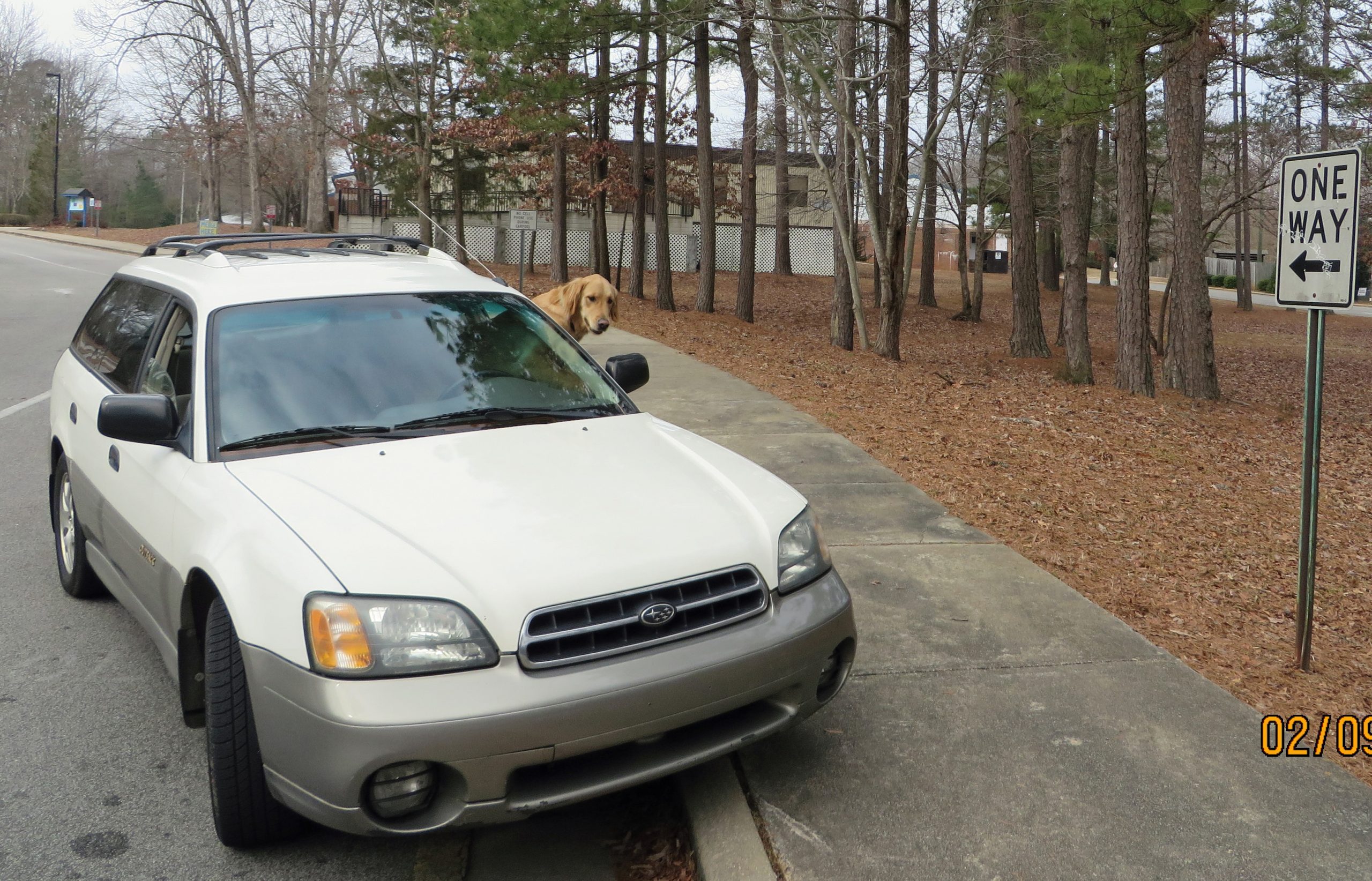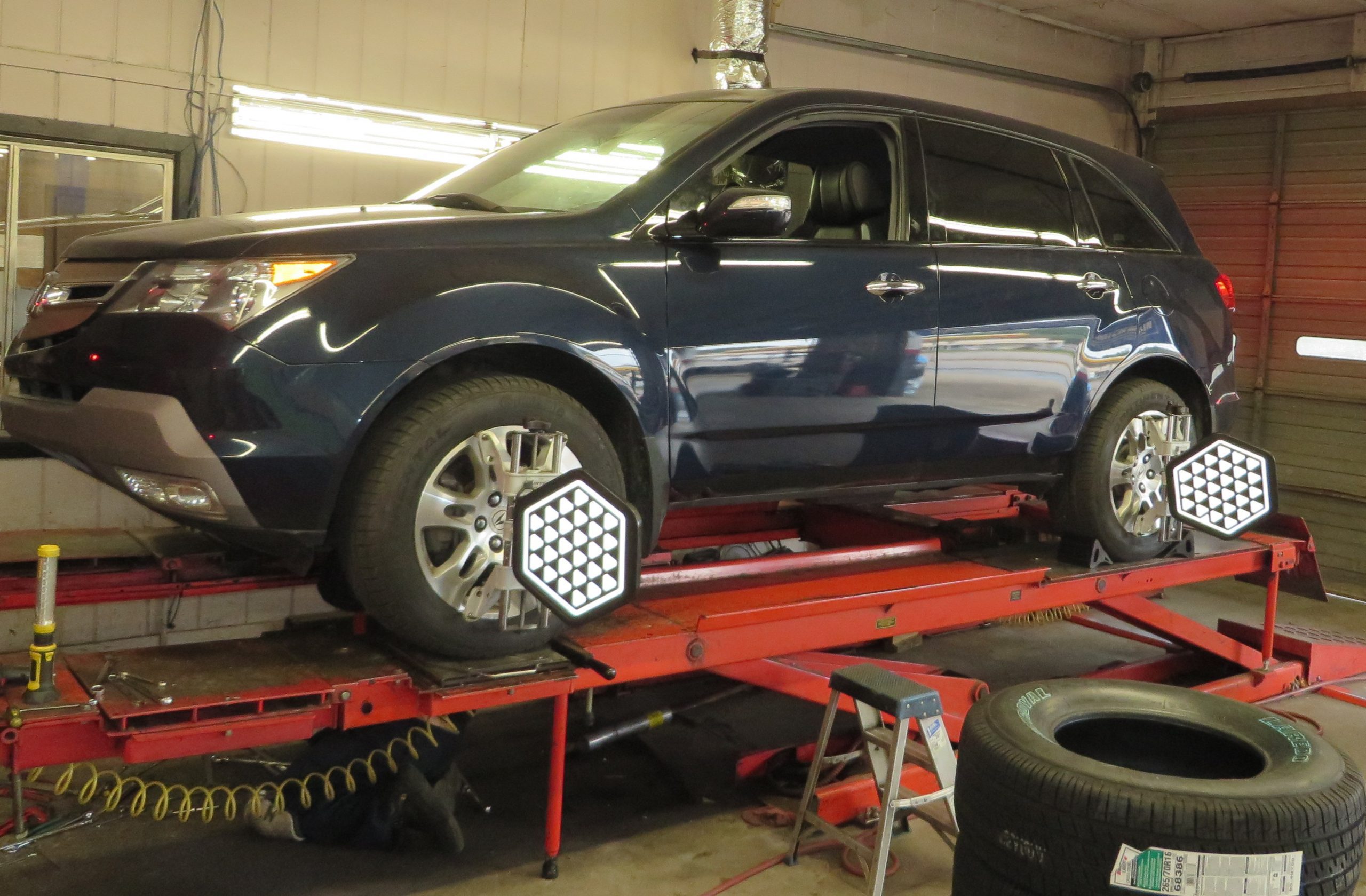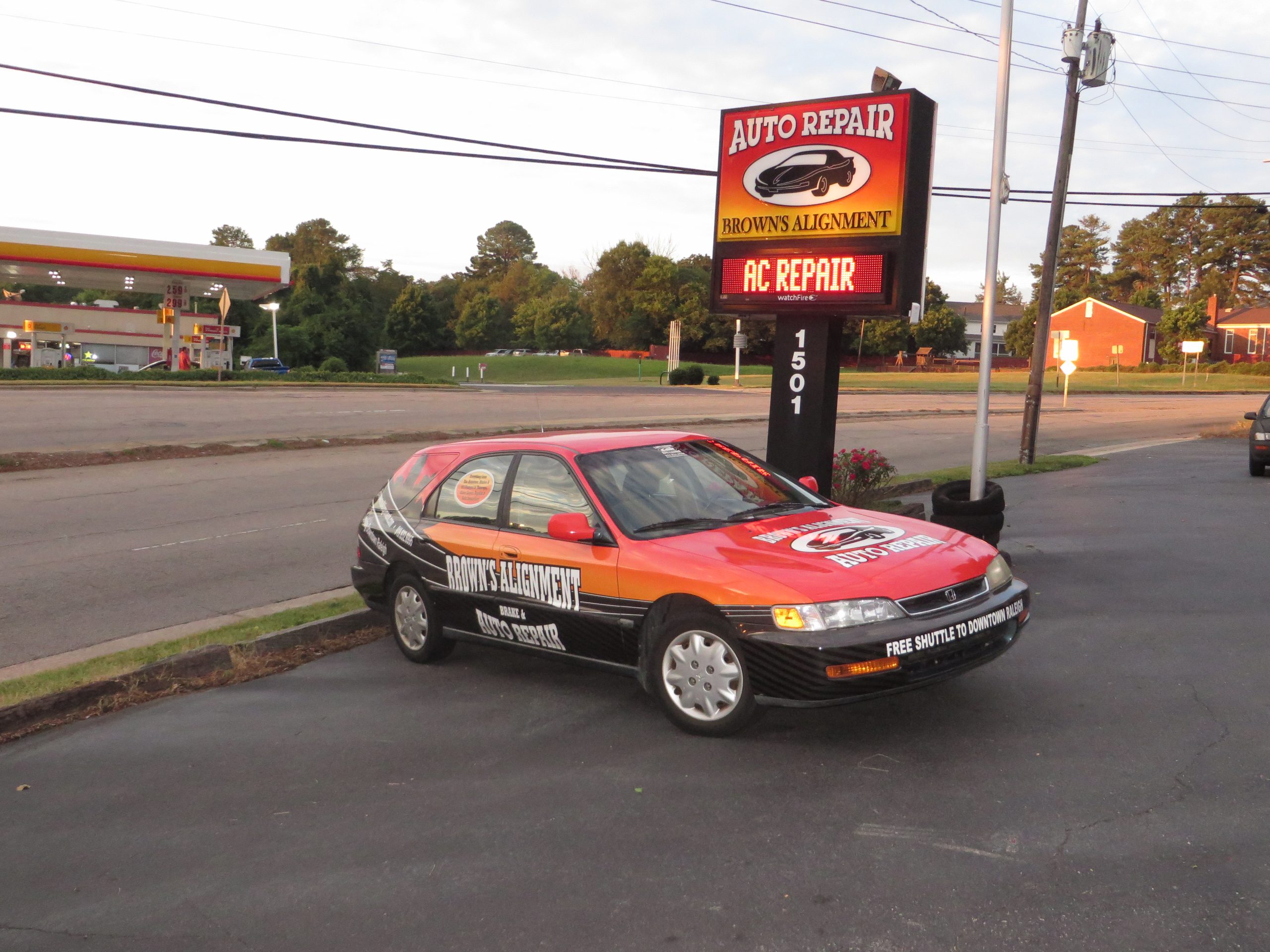What is wheel alignment?
Wheel alignment is the precise adjustment of the angles of a vehicle’s wheels according to the manufacturer’s specifications. This ensures optimal tire performance, reduces uneven wear, and helps the vehicle travel in a straight line without pulling to one side.
How do I know if I need an alignment?
- Uneven tire wear: Keep an eye out for uneven tire wear, specifically checking for inside or outside edge wear, as well as patterns like feathering or cupping. Explore our tire wear page for comprehensive descriptions and photos illustrating various types of tire wear.
- Your vehicle pulls or drifts to one side: If your vehicle tends to drift or pull to one side while driving, it’s essential to consider that most roads are sloped or crowned for efficient water runoff. Keep in mind that your car may naturally drift downhill due to the road’s slope, rather than indicating an alignment issue. To assess your vehicle’s alignment, choose a three-lane straight road and drive along the center lane, which is typically the most level.
- Your steering wheel isn’t centered: Take notice if your steering wheel is not centered, even when your car is moving straight.
- Vibration IS NOT a wheel alignment problem: Vibration felt while driving can be caused by a number of issues, but it doesn’t indicate an alignment problem. Incorrect alignment will not cause a vibration and having your alignment adjusted won’t correct the issue.

How did my wheels get out of alignment?
- Hitting or running over something: Your car can be physically knocked out of alignment by colliding with obstacles such as a curb or pothole. Additionally, running over items like a log or brick on the street has the potential to throw your wheel alignment off course.
- Normal wear and tear: Normal wear and tear from regular driving is another factor contributing to misaligned wheels. Over an extended period, the components of your suspension experience wear and start to sag. Consequently, the gradual sagging of suspension components causes the wheel alignment to progressively shift beyond its acceptable range.

How is wheel alignment corrected?
- Standard wheel alignment: If your wheel alignment isn’t too bad, a regular alignment can fix it using adjustments called toe, camber, and caster. However, not all vehicles have built-in adjustments for all of these angles.
- Installing special adjustment kits: Sometimes there’s not enough adjustment or the car doesn’t have built-in adjustments. In such cases, many cars and trucks have special kits made by other companies (not the original car maker). These kits help adjust specific alignment angles. Even if your car can adjust angles, adding a kit gives the technician more options to align it just right.
- Replacing damaged suspension parts: In the third situation, if the alignment is way off and the first two methods won’t work, it might mean some parts of the car’s suspension are bent or twisted. During a wheel alignment, technicians make tiny adjustments—usually less than a couple of degrees. This makes it hard to see if a part is bent. In these cases, the technician has to guess and decide which part to replace.
Will you check for suspension problems before performing an alignment?
Brown’s Alignment starts each wheel alignment by conducting a suspension inspection, actively searching for loose, worn, or damaged components. If any suspension parts are noticeably worn or damaged, it is important to replace them before proceeding with the wheel alignment. The accuracy of the alignment can be negatively impacted by worn or damaged parts. If no obvious suspension issues are found, we proceed with the wheel alignment.
Do you take walk-ins or do I need an appointment to get an alignment?
Our alignments are done on an hourly schedule, and we require an appointment. Our weekly schedule fills up fast, so we recommend you request your appointment at least a day or two in advance.
How much do you charge for a wheel alignment?
Wheel alignments for most sedans, minivans, and small SUVs are $113.77 (including tax). We do charge more for alignments on full-size pickup trucks and SUVs as well as for alignments on European vehicles. Please note that we are not able to perform alignments on every make and model. Please contact us for exact pricing and availability for your particular vehicle.
If my alignment doesn’t need to be adjusted, will I be charged the full price of the service?
No. Our technician will go through the entire suspension check and/or alignment setup process on your vehicle. However, if worn suspension parts are found or your alignment is within the manufacturer’s specified ranges and no adjustments are required, you will only be charged for checking the suspension and/or the alignment.

Do you do alignments on raised or lowered vehicles?
When designing car and wheel alignment specifications, manufacturers consider the ride height of the vehicle. When we perform an alignment on your vehicle, we rely solely on the manufacturer’s specifications. It’s challenging to ensure that these alignment specs remain accurate with the vehicle at a different ride height. Our approach is to align the vehicle within these specs initially and then monitor how the tires wear.
If the tires don’t wear properly, you can return, and we will attempt a custom alignment based on the first alignment and current tire wear patterns. Please note that any subsequent attempts at custom alignment will incur an additional alignment service charge and are not included in the cost of the initial alignment. Based on our experience, trucks with over a 3-inch lift often require a custom alignment in addition to the initial one. Lowered cars that we manage to align generally show satisfactory tire wear. The challenge with lowered cars is that many of them are too low to drive onto the alignment machine, thereby making alignment impossible.
Note: We perform alignments on raised or lowered vehicles solely at our discretion and may be unable or unwilling to attempt an alignment on your vehicle if it has certain modifications. Please provide us with any information on suspension customizations when scheduling your alignment appointment.
